Above is a push pull Amplifier. As we all know the 8 ohm speaker is not receiving enough juice from the supply rails, in fact its only getting around 16 watts of power, how can we double that amount to make it like 40 watts. It appears that varying the resistors value has no effect. How can we make the speaker receive more current (we can make it absorb more current by lowering the speaker's impedance but let's say the impedance is fixed at 8 ohms).